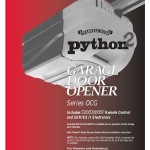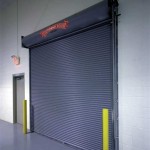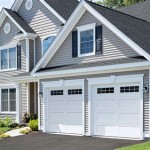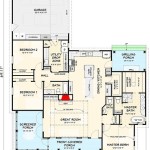Garage Door Not Opening After Power Outage: Troubleshooting and Solutions
A power outage can disrupt numerous aspects of daily life. One common inconvenience homeowners face is a garage door that refuses to open after the electricity returns. Understanding the reasons behind this issue and knowing how to troubleshoot and resolve it is crucial for maintaining access to a garage and ensuring home security.
Several factors can contribute to a garage door's malfunction following a power outage. These factors range from simple mechanical issues to more complex electrical problems. The following sections will outline common causes, troubleshooting steps, and potential solutions designed to restore garage door functionality.
Understanding Manual Release Mechanisms
Most modern garage door openers are equipped with a manual release mechanism. This feature is designed to disengage the door from the opener's drive system, allowing for manual operation during power outages. The mechanism typically involves a red handle hanging from a cord. Pulling this handle disconnects the garage door from the trolley, enabling it to be raised and lowered manually.
The first step in troubleshooting a garage door issue after a power outage should always involve checking the manual release. It is essential to ensure the door is re-engaged correctly once power is restored. Failure to do so will prevent the opener from functioning properly.
To re-engage the manual release, pull the release cord towards the door. The trolley should be able to be moved back into its driving position. Some openers might have a lever that would need to be flipped. Once the power comes back on the garage door, press the remote and the door should connect back up with the trolley. If the door doesn't move after that, try disconnecting and reconnecting the garage door opener to the power outlet.
Checking the Garage Door Opener Unit
After verifying the manual release, the garage door opener unit itself should be inspected. This unit houses the motor, control board, and other electrical components responsible for operating the door. Power surges or fluctuations during a power outage can potentially damage these components, leading to malfunction.
Begin by ensuring the garage door opener is receiving power. Check the circuit breaker associated with the garage and reset it if necessary. Verify the outlet the opener is plugged into is functioning correctly by testing it with another device. If the outlet is working, and the opener is still unresponsive, the issue may lie within the opener unit itself.
Open the garage door opener unit and carefully inspect the circuit board for any visible signs of damage, such as burnt components or loose connections. If damage is apparent, the circuit board may need to be replaced. This is generally a task best left to a qualified technician, as it involves working with electrical components.
Another potential issue could be the limit switches within the opener. These switches tell the opener when the door has reached its fully open or fully closed position. If these switches are improperly adjusted or malfunctioning, the opener may not operate correctly. Refer to the garage door opener's manual for instructions on adjusting the limit switches.
Addressing Common Mechanical Problems
Beyond electrical issues, mechanical problems can also prevent a garage door from opening after a power outage. These problems can include issues with the springs, cables, rollers, and tracks. A thorough inspection of these components is necessary to identify any potential obstructions or damage.
Garage door springs are under significant tension and play a crucial role in lifting and lowering the door. If a spring is broken or damaged, the door may be difficult or impossible to lift manually. Inspect the springs for any signs of breakage or wear. If a spring is broken, it should be replaced by a qualified technician. Attempting to replace a garage door spring without proper training and equipment can be extremely dangerous.
Likewise, the cables that connect the springs to the bottom brackets of the door should be inspected. These cables can become frayed or detached, especially if the door is operated manually for an extended period. If a cable is damaged, it should be replaced immediately.
The rollers and tracks also require inspection. Ensure the rollers are moving freely within the tracks and are not obstructed by debris or damage. Bent or damaged tracks can prevent the rollers from moving smoothly, hindering the door's operation. Clean the tracks and lubricate the rollers with a silicone-based lubricant to ensure smooth movement.
Another common mechanical issue is a door that is off its tracks. This can occur if the door is forced open or closed manually. If the door is off its tracks, do not attempt to force it back into place. Doing so could cause further damage and potentially lead to injury. Contact a qualified technician to re-align the door on the tracks safely and correctly.
Dealing with Remote Control and Keypad Issues
Sometimes, the issue may not be with the garage door opener itself, but rather with the remote control or keypad used to operate the door. Power outages can sometimes disrupt the programming of these devices, requiring them to be reprogrammed or reset.
Start by checking the batteries in the remote control. Replace the batteries with fresh ones, and then attempt to operate the door. If the remote still does not work, refer to the garage door opener's manual for instructions on reprogramming the remote. The process typically involves pressing a "learn" button on the opener unit and then pressing a button on the remote.
Keypads may also require reprogramming after a power outage. Follow the instructions in the owner's manual to reset the keypad and enter a new security code. Ensure the antenna on the keypad is clean and free from any obstructions that could interfere with its signal.
It's also possible that the frequency used by the remote or keypad is experiencing interference. Try repositioning the antenna on the garage door opener unit to improve the signal. Also, consider if there are any new electronic devices in the vicinity that might be interfering with the signal, such as new wireless routers or lighting systems.
Safety Sensor Malfunctions
Garage door openers manufactured after 1993 are required to have safety sensors. These sensors are located near the bottom of the door track and are designed to prevent the door from closing if an obstruction is detected. If the sensors are misaligned or malfunctioning, the door may refuse to close, or it may open unexpectedly after a power outage.
The safety sensors work by emitting an invisible beam of light across the doorway. If the beam is interrupted, the door will not close. Inspect the sensors to ensure they are properly aligned and that there are no obstructions blocking the beam. Clean the lenses of the sensors with a soft cloth to remove any dirt or debris that could be interfering with their operation.
If the sensors are properly aligned and clean, check the wiring connecting them to the garage door opener unit. Loose or damaged wiring can cause the sensors to malfunction. Tighten any loose connections and replace any damaged wiring. If the sensors continue to malfunction, they may need to be replaced.
A common indicator of a safety sensor issue is a flashing light on the garage door opener unit. The number of flashes can often indicate the specific problem with the sensors. Refer to the owner's manual for the specific meaning of the flashing light sequence.
Examining Lock Features
Certain garage doors are equipped with automatic locking features which engage to keep the door securely closed. A power outage may cause these locks to malfunction.
Confirm that the lock is fully disengaged before attempting to operate the garage door. There may be a manual override setting or a button accessible on the control panel to release the lock. If the lock remains engaged, the garage door opener may emit a clicking sound but fail to open.
If the automatic lock malfunctioned, refer to the garage door opener manual for a solution. If there isn't any information, contact a professional garage door technician to correct its functionality.
Surge Protection Considerations
Power surges accompanying power outages can severely damage the sensitive electronics within a garage door opener system. To protect against such damage, consider installing a surge protector specifically designed for garage door openers.
Surge protectors work by diverting excess voltage away from the connected device, preventing it from reaching and damaging the internal components. Choose a surge protector with a high joule rating for optimal protection. A dedicated surge protector for the garage door opener is a wise investment, given the potential cost of repairing or replacing a damaged opener.
Consider whole-house surge protection as an additional layer of defense against power surges. Whole-house surge protectors are installed at the electrical service entrance of a home and provide protection for all electrical devices connected to the home's electrical system.
Seeking Professional Assistance
If troubleshooting steps fail to resolve the issue, or if there is any uncertainty about performing repairs safely, it is best to seek professional assistance from a qualified garage door technician. Attempting to repair complex electrical or mechanical problems without proper training and experience can be dangerous and could potentially lead to further damage or injury.
A qualified technician has the knowledge, skills, and equipment necessary to diagnose and repair a wide range of garage door problems. They can also ensure the repairs are performed safely and correctly, protecting the homeowner from potential hazards.
When selecting a garage door technician, choose a reputable company with experienced technicians and a proven track record. Check online reviews and ask for referrals from friends or family members. Obtain multiple quotes from different companies and compare their services and pricing.
Provide the technician with as much information as possible about the problem, including any troubleshooting steps that have already been taken. This will help the technician diagnose the problem more quickly and efficiently.
Maintaining a functional garage door is crucial for security and convenience. By understanding common causes of garage door malfunctions after a power outage and having the ability to troubleshoot and resolve these issues, homeowners can ensure their garage door remains in proper working order.

Power Outage Here S How To Open Your Garage Door A All Style

How To Reset Garage Door After Power Outage Manual Mode

Reset Genie Garage Door Opener After Power Outage Surge Youtube

How To Reset Garage Door After Power Outage Manual Mode

Power Outage Here S How To Open Your Garage Door A All Style

How To Reset Your Garage Door After A Power Outage Viking

Garage Door Won T Open After Power Outage Allgood Company

How To Release And Reset The Emergency Cord On A Garage Door

Garage Door Not Working After Power Outage Troubleshooting Tips Fix Doors Ca

How To Manually Open Garage Doors During Power Outages








